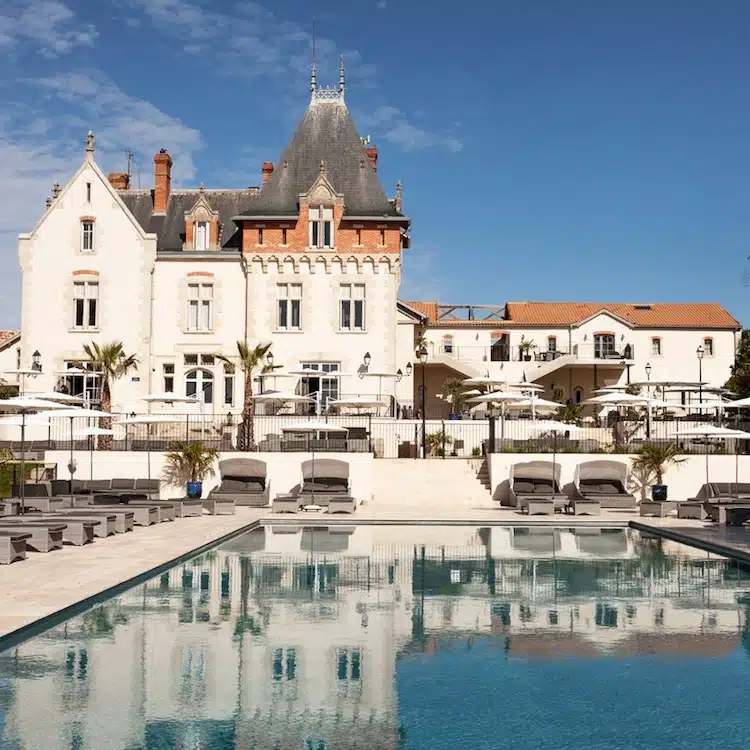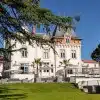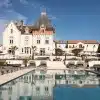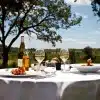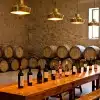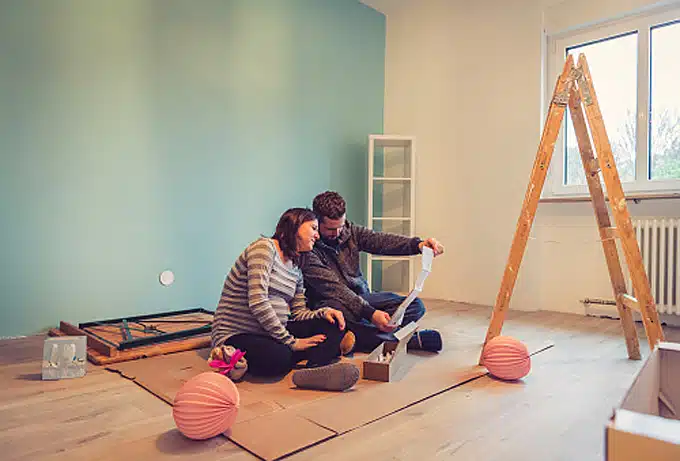The Art of Life at Chateau St Pierre de Serjac, Languedoc region – words Abigail Blasi
The southerly French province of Languedoc is one of those places where you go and the sky is bigger, wider, brighter. On arrival, the clouds look like a Renaissance painting, spread out against a hot blue sky.
Chateau St Pierre de Serjac is a newly-converted mansion in apple-green Languedoc region. It only opened in 2016, following on from Irish hoteliers the O’Hanlons’ success with the nearby Chateau Les Carrasses.
The southerly French province of Languedoc is one of those places where you go and the sky is bigger, wider, brighter. On arrival, the clouds look like a Renaissance painting, spread out against a hot blue sky.
Chateau St Pierre de Serjac is a newly-converted mansion in apple-green Languedoc countryside. It only opened in 2016, following on from Irish hoteliers the O’Hanlons’ success with the nearby Chateau Les Carrasses.
It’s one of those places where you check out of the normal world for a while. It’s a grand French country house hotel, with dizzily-ceilinged rooms, ballroom-splendid chandeliers, long-shuttered windows, and a garden terrace ideal for sundowners overlooking the infinity pool. Like the others, my room is large, with a pewter freestanding bathtub in the bedroom, and long views out over rolling hills, vines and poplar trees. Walls are French grey, hung with vaguely louche watercolours of nymphs.
Irish co-owner Karl O’Hanlon, who has been coming to Languedoc since he was a child and now lives here, explains that this is one of the world’s oldest wine regions, once cultivated by the Romans. Its contemporary wines have a combination of old world authenticity and new world iconoclasm. This marble-rich terrain is good for whites, and the chateau includes a high-tech winery. The wine list, overseen by famous winemaker and co-owner Laurent Bonfils is predictably local and superb.
However, in the bar that feels like the living room of a private members’ club, what I really want is a cocktail. The mixologist creates some incredibly wonderful cocktails, such as signature drink the ‘Serjac’, and gives the impression that he truly cares what you think. He needn’t worry. The Serjac tastes like summer, like freshly mown grass, given bite with pink peppercorns.
The restaurant, next door, with Venetian chandeliers and dark teal walls, serves an evening menu of sophisticated cooking, with a la carte mains (€15-28 and a €38 menu, plus a simpler €25 lunch menu). I try a creamy l’oeuf surprise with asparagus and caviar d’Aquitaine and an aromatic lamb cooked with oriental spices, complex and impressively presented. Dining here is formal yet laidback, balancing a tricky tightrope between the French expectations and more laidback foreign tourists.
If you fancy something simpler, there are plenty of restaurants around where you can eat a grilled fish or shellfish from the lagoon. You can also self-cater at Serjac: around the estate there are are houses and apartments tucked away in the outhouses, all high spec and decorated in soft-grey chic, some with plunge pools. There are also bikes to borrow to pedal through the vineyards, and a spa for treatments, but I take a trip instead to local town Pézanas, which is famous for its antique shops, with over fifty of them crammed full of chateau-esque splendours. If you’re in need of Venetian chandeliers, glassware, French country furniture or vintage paintings this is the place. Desperately, I try to work out where to fit a chateau-size chandelier in my not-so-regal London abode.
Twenty minutes away you can go oyster tasting at the Thau lagoon. As I approach by car, birds rise up and hover, wheeling away. The 7m-deep lake has dangling chains of oysters swaying above the surface.
The path to the pastel boathouses crunches underfoot with fragments of oyster-white shells. Here there’s a simple waterside terrace, with slatted bamboo overhead, a long wooden table. Scattered on its surface are Tarbouriech oysters, some of the best in the world. It’s run by Florent and his son and daughter, Romain and Florie, all tanned and laidback, but with an air of unpretentious dedication. Their office has a huge window overlooking for the lake. Florent has exported his process, worked out on this sleepy-seeming French lakeside, to Italy and Japan. He says, gesturing at the view, ‘the oyster business is not easy, you need inspiration.’
He explains his solar-powered system that dips the oysters in and out of the lagoon, so that they have more muscle and are more tender – the traditional Atlantic advantage – as well as rich nutrients from being reared in the lagoon. Then I get to taste them, lagoon side, together with a lightly fizzing white wine, crisp and tingling perfection after the salt-sweet taste of the oyster. These will set you back around €10 apiece in Paris, but here they’re a quarter of the price.
There’s plenty else you could do, too, in the surrounding countryside, from visiting the white-sand Atlantic beaches, to boating along the nearby canals. It’s the kind of place I feel I need to return to, to try the world’s best oysters again, leave footprints momentarily on the beaches, and cycle through the vineyards. Chateau San Pierre de Serjac and the Languedoc are a restorative reminder of the art of life. Get there before everyone else discovers it.
Words: Abigail Blasi
15% off stays of three nights or more at Chateau St Pierre de Serjac plus a complimentary case of wine until 31 October 2016.
Click here for more details

